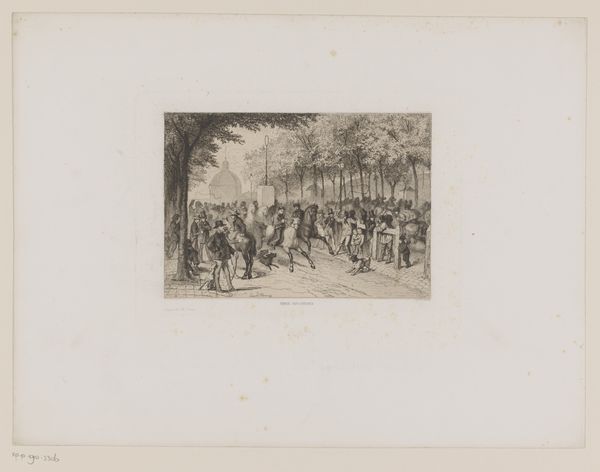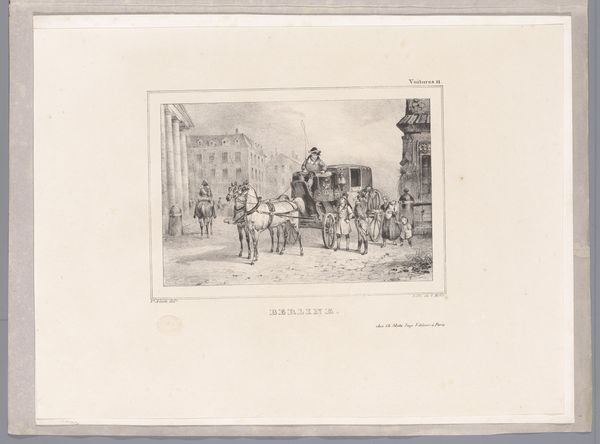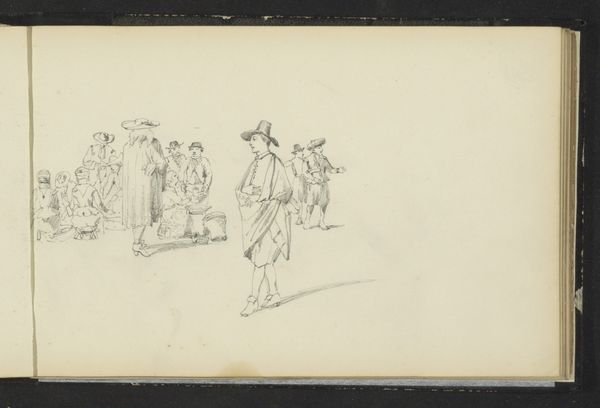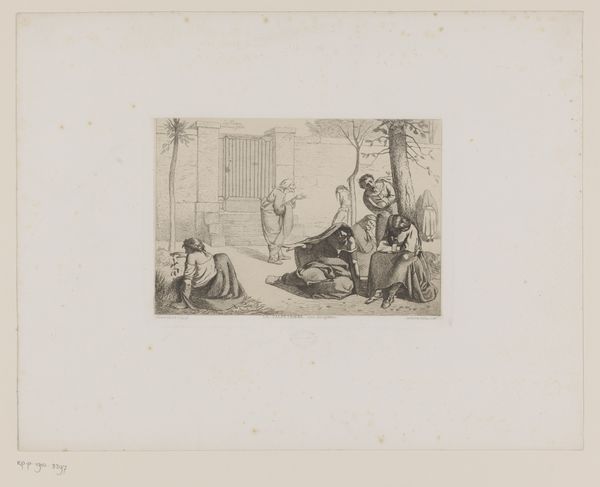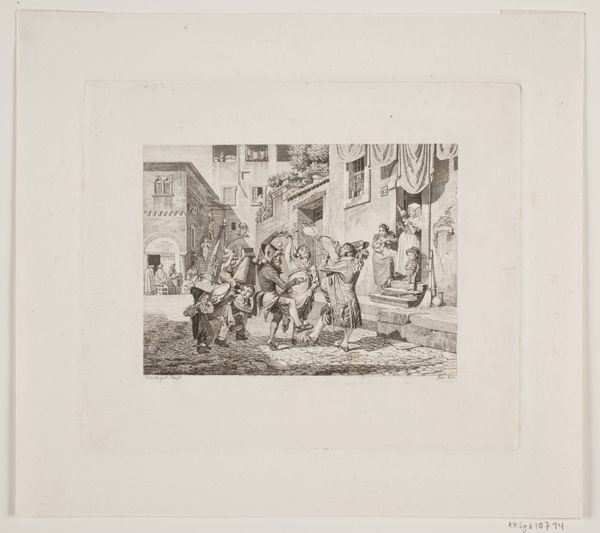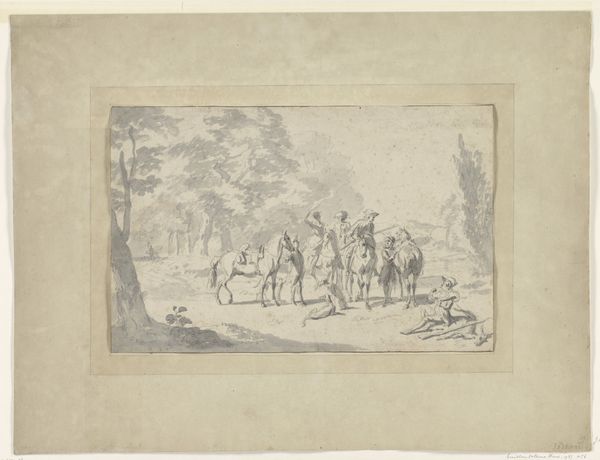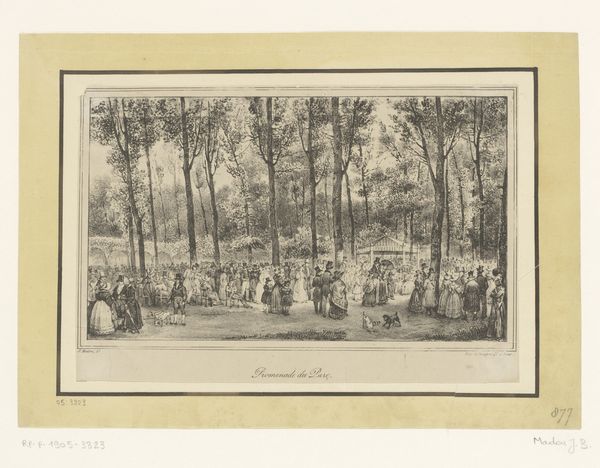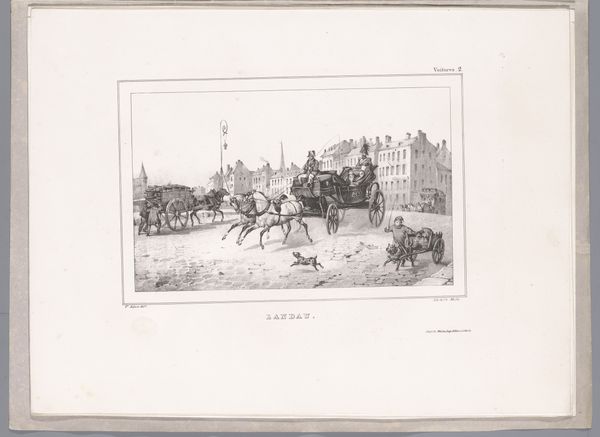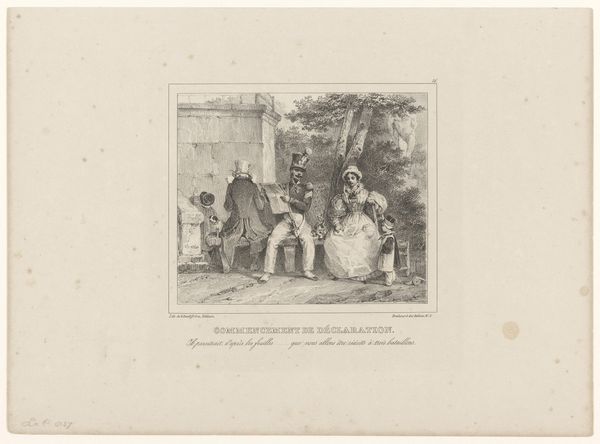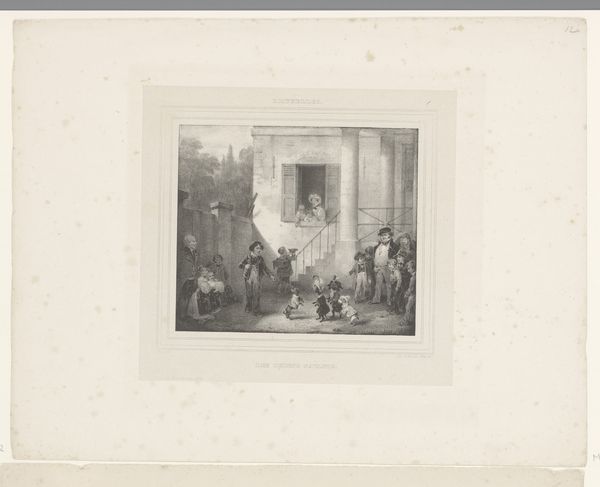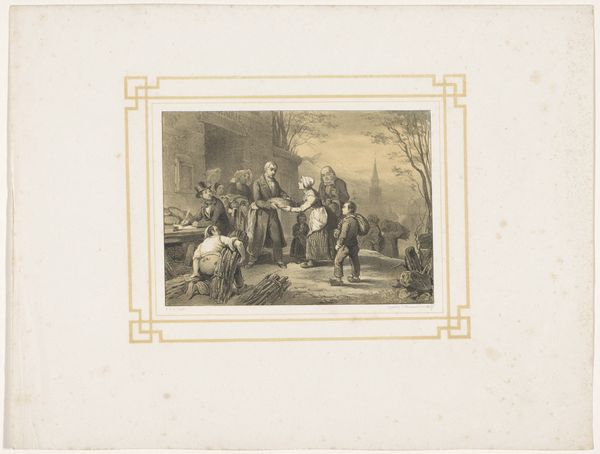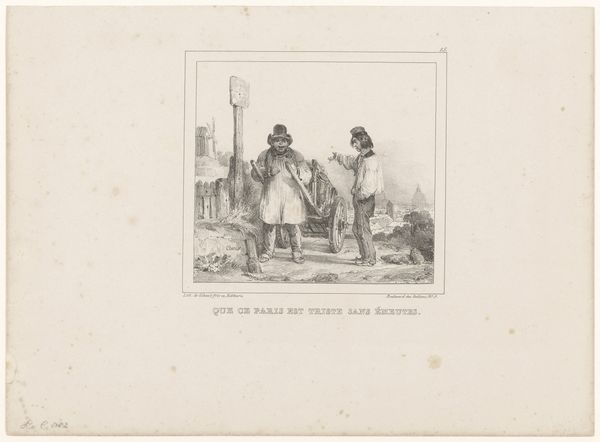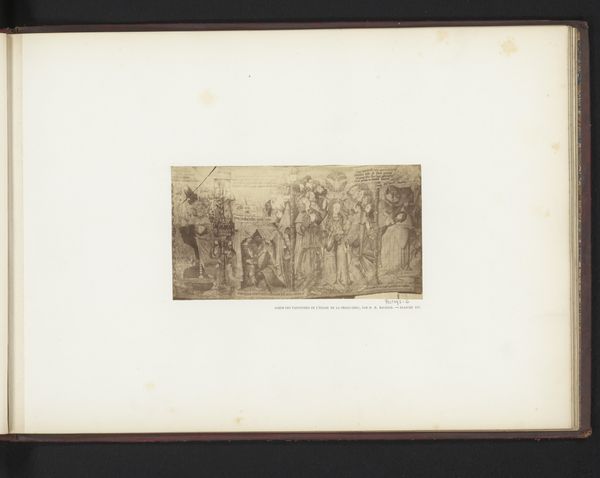
drawing, print, engraving
#
drawing
#
16_19th-century
#
ink paper printed
# print
#
landscape
#
park
#
genre-painting
#
engraving
#
realism
Dimensions: height 188 mm, width 268 mm
Copyright: Rijks Museum: Open Domain
Curator: Léopold Flameng's print, made with ink on paper, captures a serene yet poignant moment: "Four Veterans Walking in a Park with Children Playing", dating back to 1859. Editor: My initial reaction is of wistful melancholy, actually. The grayscale palette casts a somber mood, contrasting with the lively scene of children at play. Curator: Indeed, the juxtaposition is striking. These veterans, likely scarred by war—we see at least one using a walking stick—are observing children embodying innocence and vitality. The park setting becomes a stage where the past and future converge. It suggests the passage of time and perhaps generational trauma. Editor: Absolutely. I find myself reflecting on the historical context: 1859 was a time of immense social and political change in Europe. The lingering echoes of past conflicts were ever present. These veterans likely bore witness to those struggles, their presence serving as a stark reminder to the playful youth of the realities of life. It speaks volumes about who gets to experience leisure and carefree joy, versus who has been sacrificed. Curator: Notice Flameng's skill in engraving; the detail, despite the print’s small scale, is remarkable. Each line meticulously rendered contributes to a powerful narrative, filled with allegorical weight. It feels significant to remember these individuals carried memories of empire and shifting nations into a new era. Editor: And the fact that they're together suggests a camaraderie forged in shared experience. It could also be seen as a critique of how society treats its veterans—marginalized, relegated to the sidelines while life goes on around them. Are their sacrifices truly remembered, or are they simply tolerated? The artist cleverly draws a commentary about nationhood through social issues. Curator: It's a poignant representation of resilience, but it's also a cultural study—capturing fashion, social strata, and historical context, which can be analyzed through symbols to give meaning to their emotional weight in the passage of time. Editor: Ultimately, the artwork sparks an uncomfortable dialogue about power, privilege, and the enduring consequences of conflict. Curator: Thank you, together we were able to discover that symbols of perseverance exist even within works displaying delicate serenity. Editor: It’s a visual record of memory that reminds us about what progress is meant to look like.
Comments
No comments
Be the first to comment and join the conversation on the ultimate creative platform.
